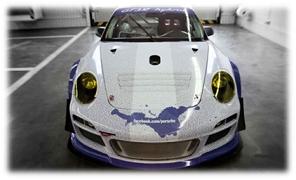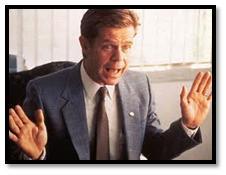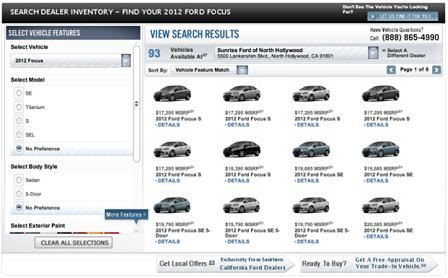In past posts, we have talked about the car as the next battleground for radio content. As we will soon learn in our Techsurvey 8, more and more Americans are buying vehicles with systems like Ford’s SYNC, enabling a wider range of dashboard entertainment and information.
Meanwhile in the cubicles, life goes on as always – or does it?
Traditionally, the automotive sector has been the top category for radio sales. Thankfully, product protection in stopsets became a thing of the past, because in the two-stopset world in which we live, scheduling seven car dealership commercials in the same hour would be mathematically impossible.
 Fortunately, the auto industry is recovering. And while most of us living in the Detroit area are thankful for the bailout of GM and Chrysler, while celebrating Ford’s comeback, radio’s leaders should share in that feeling of relief, too. Without healthy automakers, it is hard to imagine just how much worse it could have been for the radio business.
Fortunately, the auto industry is recovering. And while most of us living in the Detroit area are thankful for the bailout of GM and Chrysler, while celebrating Ford’s comeback, radio’s leaders should share in that feeling of relief, too. Without healthy automakers, it is hard to imagine just how much worse it could have been for the radio business.
But radio’s role in marketing cars which traditionally consists of running a schedule of spots, sending out the interns with the card table and the van, or doing the 101 keys drawing from the showroom floor – has been lapped at Mach 4 by new channels and modern technology. Meanwhile, radio continues to market reach and frequency, remotes, and bonus spots – and a hope and a prayer that its listeners make an appearance at the dealership.
The story that brought it home to me involves how Facebook is now offering “free consultation” (I hate the sound of that) to automotive companies to help them manage their inventories and generate sales leads.
AAMCO (Double-A-beep-beep-M-C-O) and Cottman Transmissions have been assigned Facebook consultants. As Derik Beck, director of new media at American Driveline Systems (parent of both companies), tells ClickZ, the world’s biggest social network wants to “help our industry understand how Facebook can be utilized to increase sales.”
And Econsultancy reports that in February, Ford created a new tool that allows its U.S. dealerships to see real-time vehicle inventory via their social media pages. Ford Direct Dealer Connection Vehicle Showroom (VSR) connects with Facebook, YouTube channels, and even blogs so that customers can browse through new and used car inventories without having to surf around.
In this way, all of this data stays on a dealership’s Facebook page, creating a closer connection between consumers, the dealer and, of course, Facebook. As dealers become more comfortable with Facebook integration, you can connect the advertising dots. Over time, these local car sellers will view Facebook as a valuable partner.
Of course, there’s a long way to go. Econsultancy reports Recommend.ly data showing that local businesses only participate in 6% of Facebook conversations on their pages. So DJs are well ahead of the car salesmen of the world. But not for long.
 Integration with Facebook will leapfrog newspaper flyers, the Yellow Pages, coupon companies, and yes, radio and TV, if we don’t find ways to provide value and unique marketing attributes and benefits – things that car dealers, transmission shops, and parts stores simply cannot derive from Internet directories and web ads. “Business as usual” is going to hit a reality wall unless radio takes the time and makes the effort to re-imagine how it markets its brands to car dealers and automotive companies.
Integration with Facebook will leapfrog newspaper flyers, the Yellow Pages, coupon companies, and yes, radio and TV, if we don’t find ways to provide value and unique marketing attributes and benefits – things that car dealers, transmission shops, and parts stores simply cannot derive from Internet directories and web ads. “Business as usual” is going to hit a reality wall unless radio takes the time and makes the effort to re-imagine how it markets its brands to car dealers and automotive companies.
Every day programmers are challenged to create content on multiple channels, while attempting to strengthen their brands in social media. In the digital arena, the sales department won’t get a Mulligan. The pressure is on sales managers to create lasting relationships with local dealerships and groups that can transcend the growing value of web channels and social networks. It’s not going to be easy.
Radio’s content creators are going through this drill as we speak. The DOS, GSM, and LSM should find a way to get invited to these brainstorm meetings. Some new thinking about marketing cars on the radio would be most welcome.
Radio doesn’t need more sellers. It needs marketers.
- Every Company Is A Tech Company - January 14, 2025
- The Changing Face Of Social Media (OR WTZ?!) - January 13, 2025
- Traveling At The Speed of CES - January 10, 2025





Two words: Direct response. Anyone who’s generating leads online—right now—is using direct response. And DR is old hat to broadcasters. The sooner you abandon “branding” dollars and get on board w/ DR approaches the sooner you’ll start having deeper, meaningful, purpose-driven (lead-generating) relationships w/ customers. Don’t take it from me. Take it from him https://www.youtube.com/watch?v=Br2KSsaTzUc
Jeff, the David Ogilvy video speaks volumes about the power of direct response vs. image advertising. Thanks for sharing it. My favorite line? “You have to taste blood.” Appreciate you adding to our conversation and reading our blog.
Con gusto, Fred. Thanks for your thoughts. Yes… I don’t know many marketing people (outside of infomercial producers) who operate under the ‘taste blood’ mindset. Here’s one from my blog this morning:
“Sure, ‘making a sale’ via a social media channel is a possibility, but for most organizations it is not the primary goal. But creating brand awareness and touchpoints with prospects/customers surely are fine goals…”
???
Jeff, thanks again for continuing the conversation.